A complete keto cheat sheet to help you get started on your keto diet. Get into the fat-burning state of ketosis and reap the benefits!
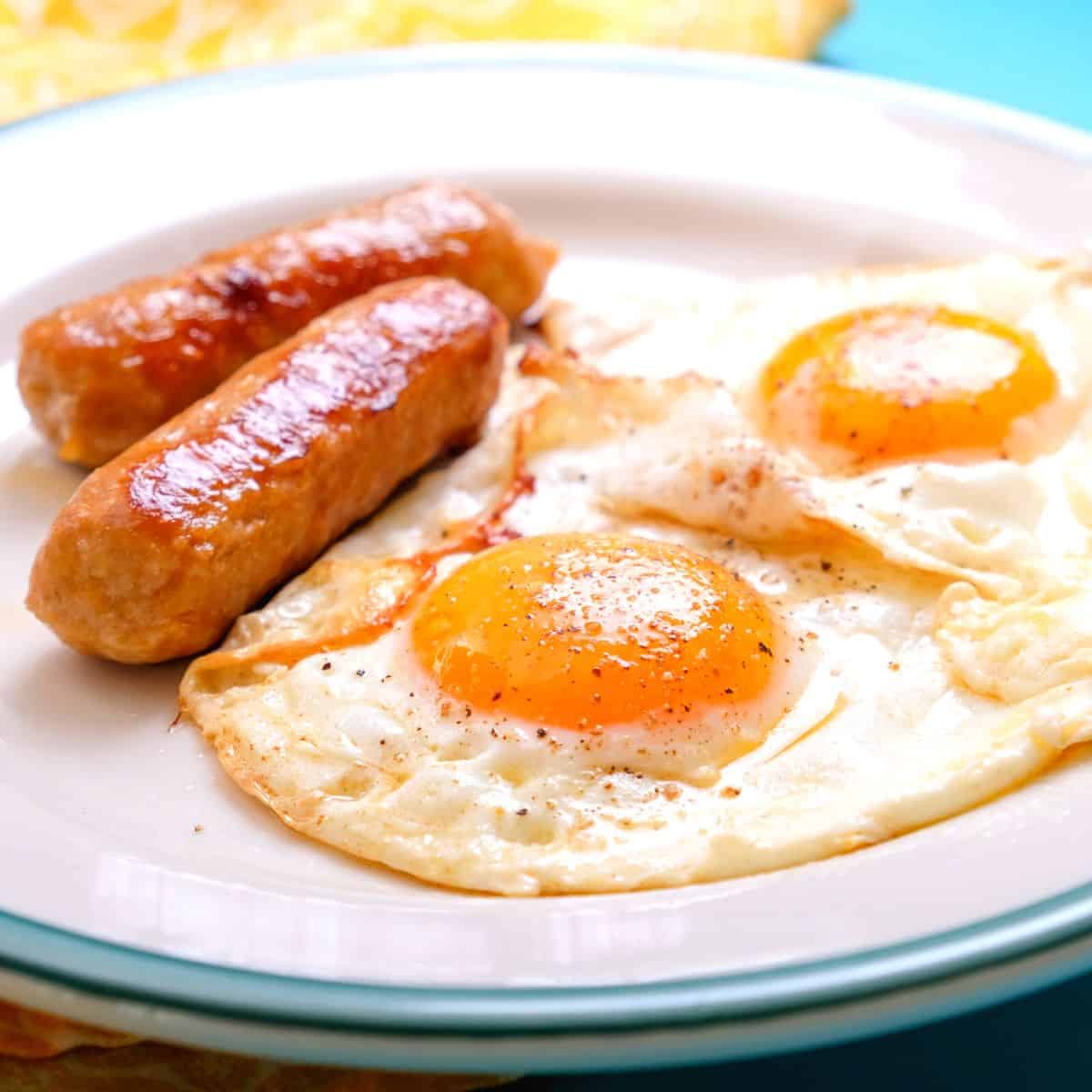
Table of Contents
Use this keto cheat sheet to get into ketosis faster than ever! This easy-to-follow cheatsheet is broken down into 5 parts and includes a 7-day meal plan with delicious recipes to help you start your ketogenic lifestyle.
Getting Started on Keto
Have you ever noticed how people have the curious ability to take something simple and make it horrendously complicated?
Nowhere is this propensity more pronounced than when it comes to weight loss. There have been more books written about losing body fat than any other subject – and yet, here we are, drowning in a sea of obesity.
Talk about information overload!
For most people, the mass of confusing and contradictory advice leads to frustration and immobilization.
Over recent years, a shining light has re-emerged amid the plethora of fat loss scams, celeb diet fads, and kooky weight loss breakthroughs.
It is the ketogenic diet.
Yet, inevitably, the keto diet has quickly been swamped in a mass of information and complications that leave people scratching their heads – and then giving up.
This article aims to strip away the fat, literally and metaphorically, to provide you with the actionable essentials of living the keto way. Each part of this article will focus on a key area of keto implementation, culminating in a simple keto cheat sheet you can print out and stick on your fridge as a roadmap to success.
The final part is where the rubber hits the road with your 1-week keto meal plan, complete with original sumptuous recipes.
So, let’s go keto!
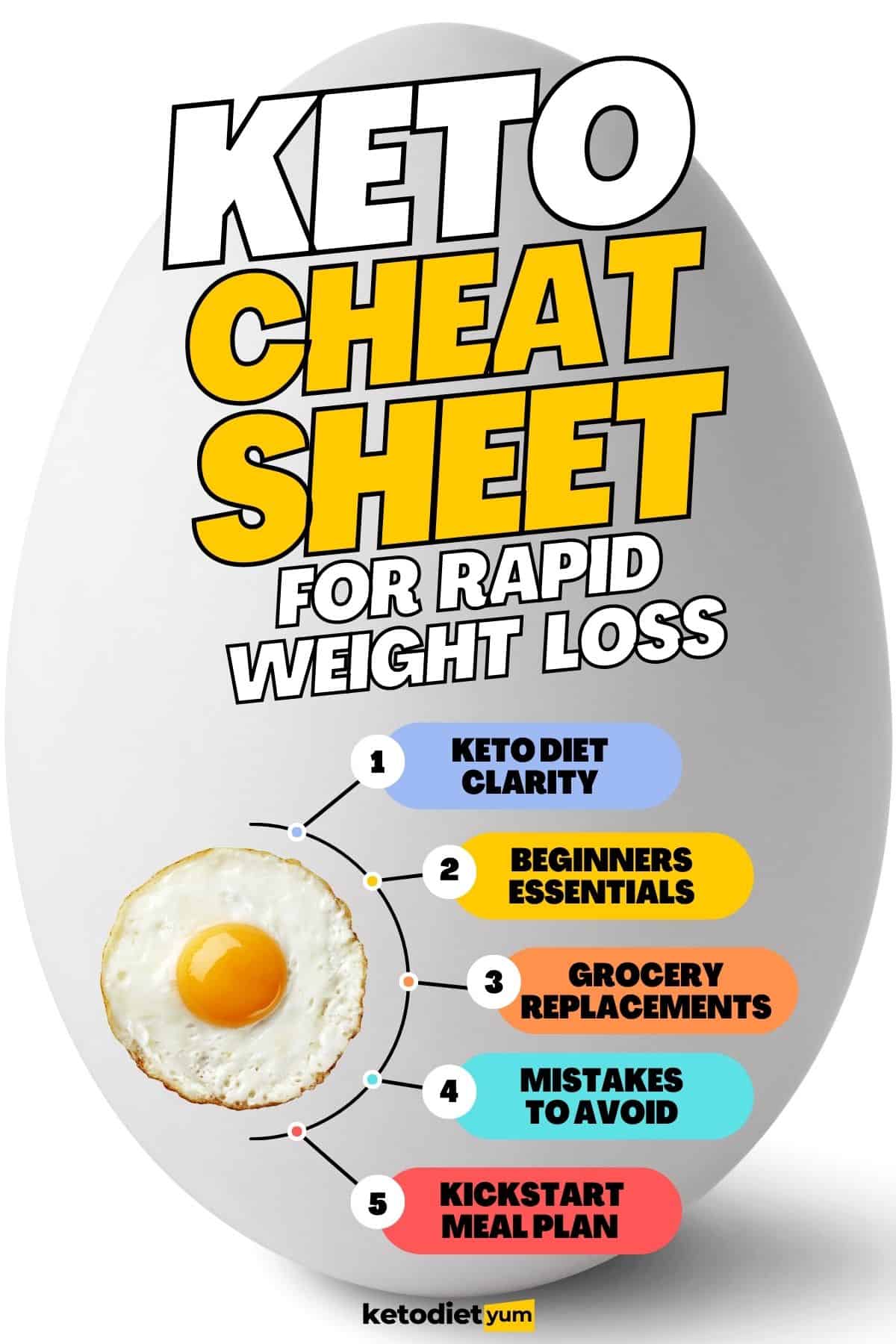
Part 1: Keto Clarity
In the first part of our keto cheat sheet, we'll explain just what a ketogenic diet is and how it works.
Ketosis (pronounced key-toes-sis) is a metabolic state that occurs when you follow a very low-carb, high-fat, and moderate-protein diet. It causes your body to switch from using glucose (from carbs) as its primary fuel source to using ketones, produced when it burns fat.
Ketones are used as an alternative fuel source when glucose is unavailable. In the process, your body changes from being a sugar burner to a fat burner.
When you are 'in ketosis,' your body uses fat as its main energy source. Getting into the state of ketosis takes different amounts of time for different people. A lot depends on their current lifestyle and dietary habits.
People who follow a clean diet can flip into ketosis in a few days, whereas people who have been used to eating a lot of processed sugar foods may take weeks.
Being in ketosis is a perfectly normal metabolic state. It is, in fact, the body’s preferred fuel source. As an example of the superiority of ketones over glucose as a fuel source, consider the Inuit people of northern Alaska...
In 1879, Frederick Schwatka, a US Army lieutenant, doctor, and lawyer, embarked on an Arctic expedition to look for records left by two Royal Navy ships that were lost in 1845. Schwatka began his journal in April 1879 with eighteen people, including several Inuit families, enough stored food for them for one month, and ample amounts of bunting equipment.
After a period of adaptation, he quickly learned that consuming an Inuit diet with plenty of animal fat would sustain him, even during hours of strenuous walking. This was one of the first understandings of keto-adaptation. Today, the process of switching from a sugar-burning to a fat-burning state is known as the Schwatka Imperative.
Ketone bodies are the preferred energy source of the heart and can be used as efficiently as glucose by the brain. There is now a growing body of research supporting the beneficial effects of being in ketosis on aging, inflammation, metabolism, cognition, and athletic performance.
Yet, those health benefits are not the main reason most people want to get into ketosis. They do it to lose body fat.
Ketosis is a fantastic way to lose fat. The production of ketones is a by-product of fat burning. The energy you produce in ketosis comes from both the fat stored in your body and the fat you consume in your diet. Compare this to a high-carb diet where food is stored as fat!
What Keto Can Do for You
- Naturally control hunger
- Effortless weight control
- Mental clarity
- Better sleep
- Normalized metabolic function
- Stabilized blood sugar
- Restored insulin sensitivity
- Lower inflammation levels
- Lowered blood pressure
- Endless energy
- Increased sex drive
- Improved immune system
- Better exercise recovery
Part 2: Keto Cheat Sheet Beginners Essentials
Having established the ‘why’ of keto, it's time to move into the ‘how.’ In this part, we’ll provide you with the 3 essential steps that allow you to fully customize your ketogenic to ensure that it meets your unique requirements.
Follow this game plan, and you’ll be able to ease your way into keto in less than a week.
Step One: Calculate Your Daily Caloric Requirement
The keto diet is based on macronutrient ratios. However, to be able to apply those ratios, we need to know what our daily caloric goal is.
There are several formulations for working out your daily caloric requirement. Among the most accurate is the Mifflin-St Jeor formula. Use the following calorie calculator to work out your daily caloric requirement.
Ageyears
Weightstones lbs
Heightfeet inches
Body fat%
Net carbsgrams
Specify the amount of daily net carbs you'd like to consume. Typically, 20-30 grams is recommended to start with.
Results
Maintenance
Maintenance level is the level at which your weight remains stable.
| Your BMR is: | 1536 | kcal |
| Calories to consume: | 2027 | kcal |
| Your fat intake should be: | 184 | grams |
| Net Carbs | Protein | Fat | |||
| 25 | grams | 69 | grams | 184 | grams |
| 100 | kcal | 275 | kcal | 1653 | kcal |
| 5 | % | 14 | % | 81 | % |
Goal
Below is a range of calorie deficits to help you lose weight. For best results, it is recommended that you opt for a moderate calorie deficit of 10-20%.
Small calorie deficit (11%)
| Calories to consume: | 1804 | kcal |
| Your fat intake should be: | 159 | grams |
| Net Carbs | Protein | Fat | |||
| 25 | grams | 69 | grams | 159 | grams |
| 100 | kcal | 275 | kcal | 1430 | kcal |
| 6 | % | 15 | % | 79 | % |
Moderate calorie deficit (22%)
| Calories to consume: | 1581 | kcal |
| Your fat intake should be: | 134 | grams |
| Net Carbs | Protein | Fat | |||
| 25 | grams | 69 | grams | 134 | grams |
| 100 | kcal | 275 | kcal | 1207 | kcal |
| 6 | % | 17 | % | 77 | % |
Large calorie deficit (33%)
| Calories to consume: | 1358 | kcal |
| Your fat intake should be: | 109 | grams |
| Net Carbs | Protein | Fat | |||
| 25 | grams | 69 | grams | 109 | grams |
| 100 | kcal | 275 | kcal | 984 | kcal |
| 7 | % | 20 | % | 73 | % |
Now, record your daily caloric total on the printable Cheat Sheet at the end of this article.
Now that you are armed with your total daily caloric requirement, you can plug in your macronutrient numbers to find out how many fats, carbs, and proteins you need to eat daily.
You will consume 75% fats, 20% protein, and 5% carbs on the standard Ketogenic diet.
Let’s plug these numbers into our two examples to see what we end up with.
We’ll start with our 30-year-old guy, who is consuming 1,815 calories per day...
- FAT consumption = 1,815 x 75% = 1361 calories from fat
- PROTEIN = 1,815 x 20% = 363 calories from protein
- CARBOHYDRATES = 1,815 x 5% = 91 calories from carbohydrates
Our 30-year-old lady, who is consuming 1,815 calories per day, looks like this...
- FAT consumption = 1,560 x 75% = 1170 calories from fat
- PROTEIN = 1,560 x 20% = 312 calories from protein
- CARBOHYDRATES = 1,560 x 5% = 78 calories from carbohydrates
Work out your numbers here...
- FAT consumption = _______ x 75% = _______ calories from fat
- PROTEIN = _______ x 20% = _______ calories from protein
- CARBOHYDRATES = _______ x 5% = _______ calories from carbohydrates
Now, we can drill down deeper to determine how many grams of each macro you need to eat.
- There are 9 grams of FAT per calorie.
- There are 4 grams of PROTEIN per calorie.
- There are 4 grams of CARBOHYDRATES per calorie.
Going back to our example guy, his macro grams look like this...
- Fat = 1361 divided by 9 = grams
- Protein = 363 divided by 4 = grams
- Carbohydrates = 91 divided by 4 = grams
Here is what it is like for our 30-year-old woman:
- Fat = 1170 divided by 9 = 130 grams
- Protein = 312 divided by 4 = 78 grams
- Carbohydrates = 78 divided by 4 = 19.5 grams
Now, work out your Macro numbers, then fill them in on the Cheat Sheet at the end of the article.
- Fat = ______ divided by 9 = ___ grams
- Protein = ______ divided by 4 = ___ grams
- Carbohydrates = ______ divided by 4 = ___ grams
You now know what your macro goals are. While you don’t have to count calories on the keto diet, you will want to get your head around what your macro targets look like in terms of real food and portion sizes.
Using a quality app like Myfitnesspal over the first couple of weeks of your keto experience will help you gauge your long-term portion control.
Step Two: The Pantry Make-Over
Your next step is to expunge your home of carb-laden foods. Start with grain foods – they are the ones that will cause the quickest blood sugar surge. Then, clear out the packaged freezer meals, pasta, rice, sugary drinks, candy, and cereals.
This is where you have to get ruthless. If you're serious about your weight loss journey, you must complete this step honestly and thoroughly. It doesn’t matter how strong your willpower is – if you keep carb foods in your home. You will find a way to get them into your body. And when you do that, you will pull yourself out of ketosis.
From now on, processed carbohydrate foods DO NOT APPLY to you. Here are some of the items to remove from your pantry, fridge, and freezer:
Pantry
- Beans (dried, canned & baked)
- Bread (white and whole grain loaves, buns, rolls, etc.)
- Cake
- Candy
- Cashews & high-carb nuts
- Cereal
- Chips (all kinds)
- Chocolate (keep very dark
- varieties with >85% cacao)
- Cookies
- Crackers
- Flour (keep almond flour &
- coconut flour)
- Fruit (canned, dried, fresh, & preserved)
- Grains (barley, quinoa, rice, wheat, etc.)
- Honey
- Jam, jellies, chutneys, and marmalade
- Oatmeal
- Pasta (regular & whole-wheat)
- Pastries
- Peanut butter and nut butters (keep natural butter with no added sugar)
- Popcorn
- Potatoes & sweet potatoes
- Snacks
- Spaghetti and pasta sauce
- Spice mixes (taco, BBQ, fajita, etc.)
- Sugar in all forms
- Syrups
- Taco shells
- Tortillas
- Wraps
Fridge
- Applesauce
- Beer
- Fruit (keep raspberries, blackberries, blueberries, & strawberries
- Fruit juice
- Jam, jellies, chutneys, & marmalade
- Ketchup
- Margarine
- Milk
- Peanut butter and nut butters (keep natural butter with no added sugar)
- Relish
- Salad dressings
- Salsas
- Sauces
- Soft drinks
- Sports drinks
- Syrups
- Vitamin water
- Yogurt (all except full-fat Greek yogurt)
- All low-fat, fat-free, light, or lite products
Freezer
- Bread (white and whole grain loaves, buns, rolls, etc.)
- Cakes
- Cookies
- French fries (all frozen potato products)
- Frozen corn
- Frozen dinners
- Frozen pizza (pizza crusts and pizza-like products)
- Frozen yogurt
- Ice cream
- Pastry (filo pastry, pie crusts, and pastry dough)
- Popsicles and other frozen treats
- Sorbet
- Toaster strudels
- Toaster waffles
Once you have cleared the carbs out of your home, it will be time to replace them with healthier keto-friendly foods. In our printable keto cheat sheet at the end of this article, you will find a handy replacement guide to carry to the grocery store.
Step Three: Meal Prep
Starting a new way of eating can be a daunting prospect. One way we’ve found to make it a lot easier to negotiate your way first that first week is to have a set meal plan to follow. That way, you don’t have to think about what is coming to your next meal – it has all been carefully laid out for you. At the end of this article, we provide you with just such a plan.
The next step to success over that first week is to prepare your meals in advance. Meal prep is a great idea for everyone, but it’s especially advantageous when starting a new nutritional path. It means you don’t have to think about how to prepare your next meal – you grab it out of the freezer.
If you plan to start your keto eating pattern on a Monday, spend a couple of hours on Sunday preparing your meals, making enough for two or three portions to provide multiple meals throughout the week. Then, place each meal in a sealed container and store it in the fridge, ready to pull out and heat up when needed.
Part 3: Cravings and Food Swaps
A Note On Cravings
Most of the cravings you’ll experience when starting keto are caused by sugar. However, sometimes our bodies crave food because of a lack of nutrients, and satisfying that nutrient deficiency can help get rid of the craving. Below are some keto food swaps that can satisfy certain cravings you might be having.
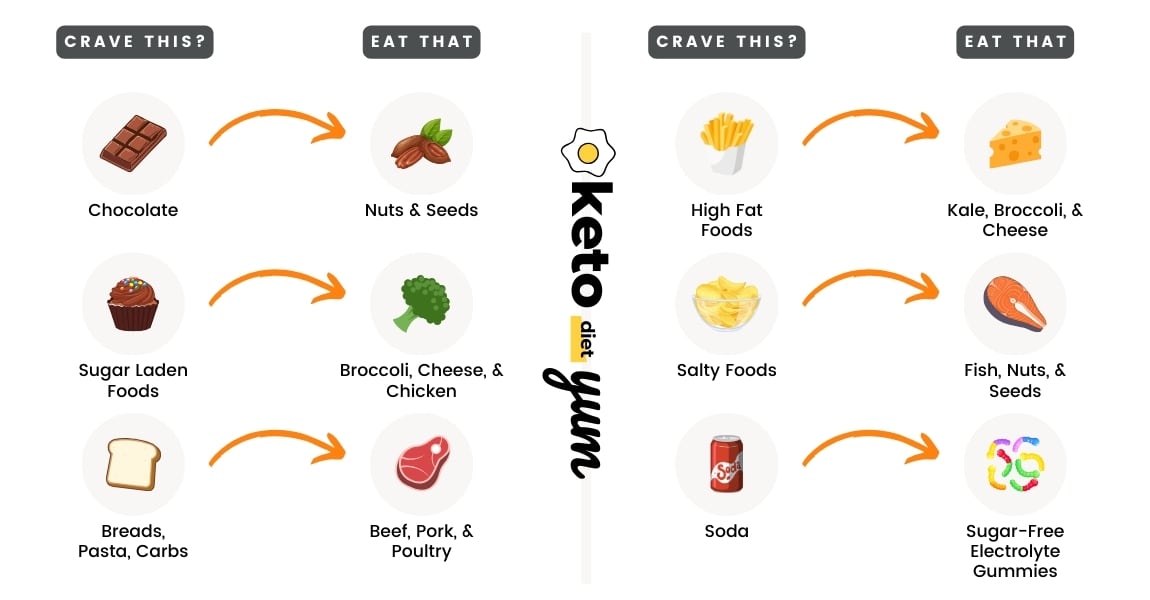
Keto Food Swaps
Knowing what to substitute your favorite high-carb foods with is crucial to succeed on the keto diet. Here are some simple swaps you can make for everything from bread to pasta and rice. Use this simple guide to make replacements for your favorite foods. Also, check out our keto food list for a complete guide to keto diet food.
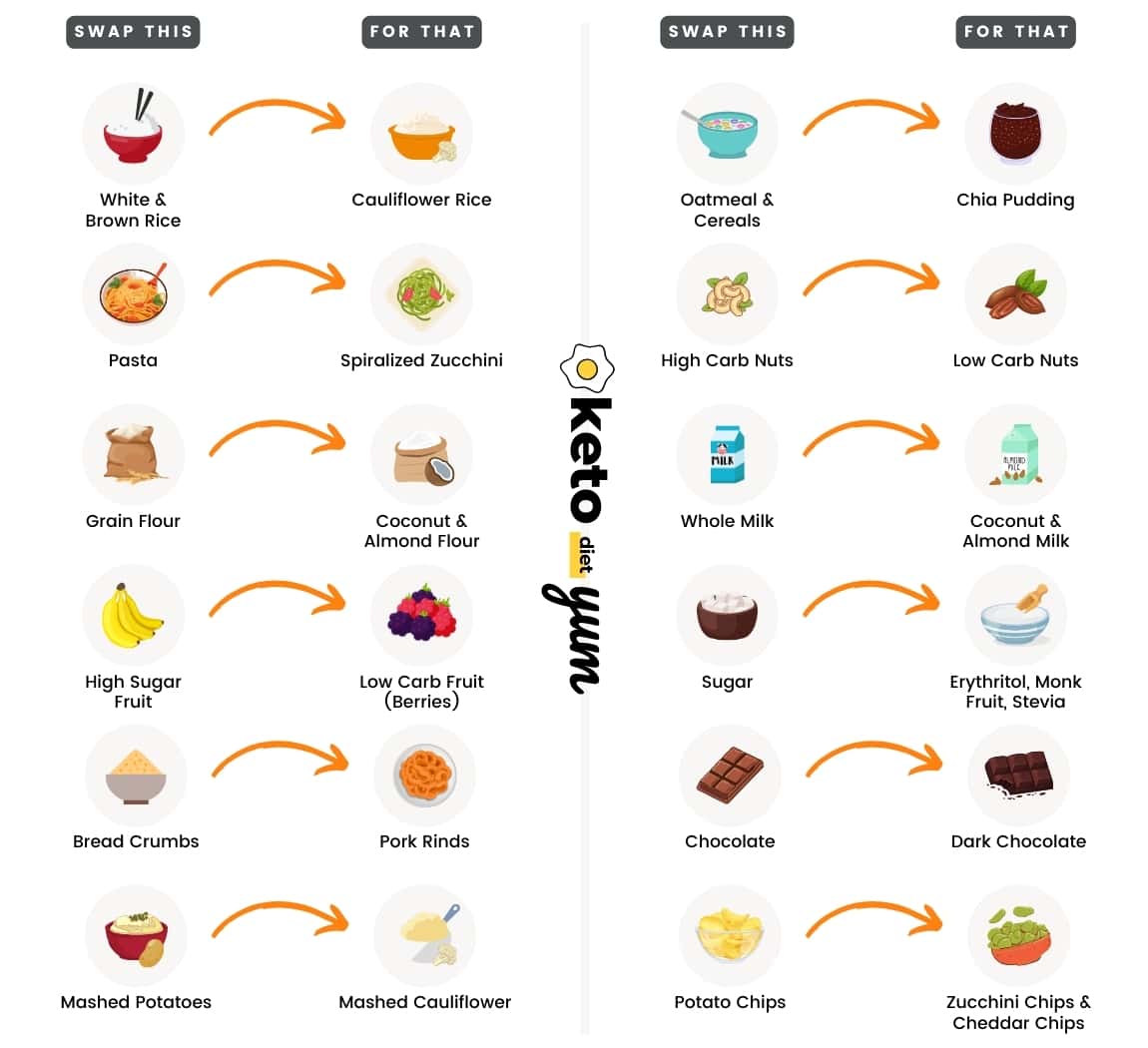
High-Carb Food Replacement Recipes
Here are some easy low-carb recipes you can use for different types of food.
- Chocolate: Replace with keto chocolate bars or chocolate hearts.
- Bread: Lettuce wraps or low-carb bread.
- French fries: Replace with zucchini fries, green bean fries, or halloumi fries.
- Pizza: Replace with cauliflower pizza, almond flour pizza, or fathead dough pizza.
- Flavored yogurt: Greek yogurt with keto maple syrup or a Greek yogurt parfait.
- Oatmeal/cereal: Replace with matcha chia pudding, blueberry chia pudding, cacao chia pudding, or keto cinnamon toast crunch.
- Pancakes: Replace with cream cheese pancakes, coconut flour pancakes, almond flour pancakes, or pumpkin pancakes.
- Waffles: Replace with chocolate chaffles, peanut butter chaffles, or plain chaffles.
- Processed soups: Replace with one of our huge range of keto soup recipes here.
- Pasta: Replace with zucchini carbonara, zucchini alfredo, or keto pasta.
- Rice and potatoes: Replace with cauliflower rice, cauliflower salad, or cauliflower mash.
- Cookies: Replace with peanut butter cookies or one of our huge range of keto cookie recipes here.
- Fruit juice and soda: Replace with keto smoothies.
- Starbucks: Replace with one of our Starbucks Copycat recipes here.
- Ice cream and frozen yogurt: Replace with homemade ice cream, coffee ice cream, chocolate popsicles, strawberry popsicles, or sugar-free frozen yogurt.
- Cakes, muffins, pies, and sweet breads: Replace with one of our huge variety of keto recipes here.
Part 4: Mistakes to Avoid
Many people think they’re following a keto diet, yet are adding in foods tripping them up. The biggest challenge is not eating enough fats but reducing carb and protein intake sufficiently to get into and maintain ketosis.
The problem with overeating protein is that your body can convert amino acids into glucose through gluconeogenesis. Yet, overeating protein is just one of 5 newbie keto diet mistakes that prevent people from achieving the state of ketosis.
1. Too Much Protein
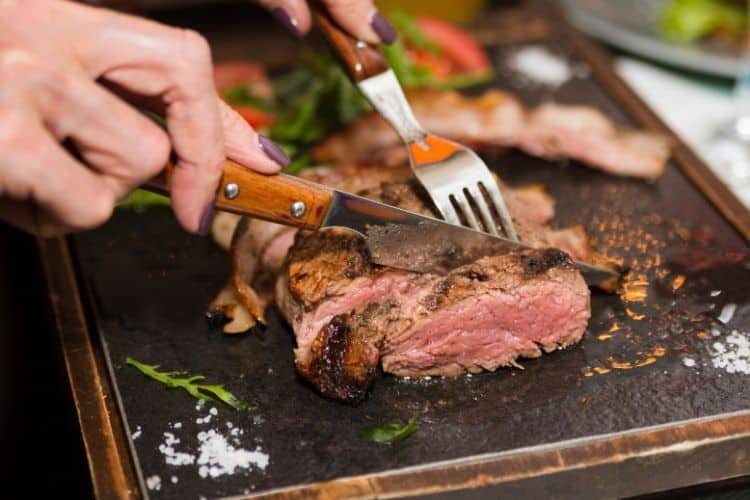
To produce ketones, you must follow a diet high in fat but moderate in protein. When you overeat protein, your body will convert the excess into glucose. This will happen if you make foods like chicken, turkey, and low-fat beef and pork the mainstay of your meals.
To curb your protein intake, opt for the fattest cuts of meat. Eat chicken with the skin on, and consciously try to reduce your protein intake. As a guide, you need to keep your protein intake less than 0.9 grams per pound of body weight. So, if you’re a 130-pound woman, you will want to keep your daily protein intake to less than 117 grams.
2. Relying on Urine Ketone Sticks
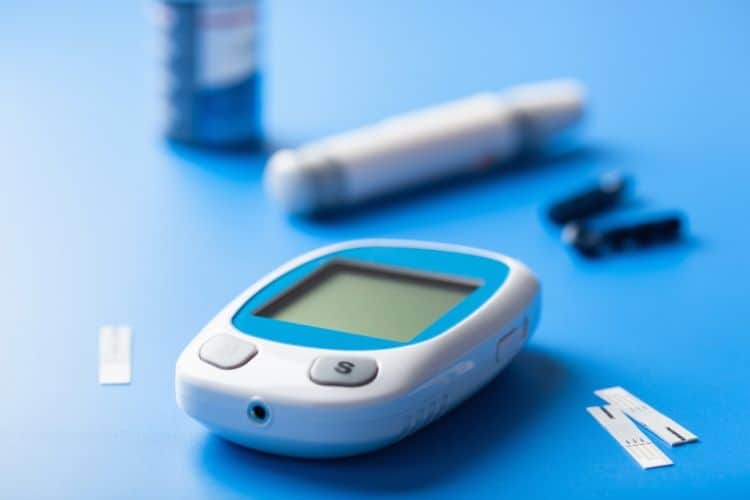
Your goal on keto is to get into a state of ketosis.
So, how do you know if you have chained that goal?
You use keto testing strips.
Keto testing strips tell if you’re in ketosis at the beginning of your keto journey. However, after about a month in ketosis, the kidneys will adapt to and excrete fewer ketones. After that, you will only see a trace amount of ketones in the urine.
Yet, most people continue relying on keto strips to let them know if they are staying in ketosis. This is a mistake – once you are fully keto-adapted, keto strips will not accurately depict how you burn fat for fuel.
As a result, keto strips can kill your enthusiasm just at the point when your body is starting to ramp up for fat loss. Once you switch to a fat-burning energy system, your body will rely on a specific ketone - beta-hydroxybutyrate – as its main fuel source.
But keto strips don’t measure for beta-hydroxybutyrate. During the change-over process, the body relies on ketone acetoacetate, which is the ketone body that is measured in urine.
Then, as ketones become your primary fuel source, acetoacetate gets converted to beta-hydroxybutyrate. The result is that your kept strips will no longer turn to the magic purple, and you will stress that you are doing something wrong!
The bottom line is to stop using keto strips after the first month. Just stick to the game plan – very low carb, moderate protein, and high fat – and you WILL remain in keto.
3. Not Eating Enough Fat
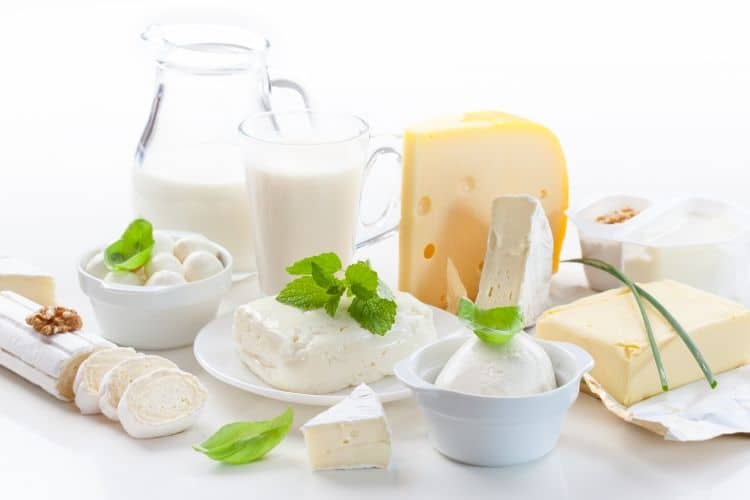
When something has been ingrained into you your whole life, it can be extremely difficult to get past it. That is the case when it comes to eating fat. Contrary to what you’ve been taught, dietary fat will not clog your arteries or make you fat.
The truth is that eating more fat is one of the best ways to stave off hunger and cravings, especially for carbohydrates, when you are going low carb. To succeed in the keto diet, we all must overcome our fear of fat.
Don’t feel guilty about chowing down on the fat surrounding your steak. Plow into that delicious skin that’s covering your roast chicken. And eat more butter, coconut oil, sour cream, full-fat cheese, avocados, full-fat Greek Yogurt, and whipped cream.
There is no limit to these foods!
4. Over Eating

Let’s consider the first basic principle of nutrition . . .
To lose body fat, you need to burn more calories than you consume each day.
To gain muscle weight, you must consume more calories than you burn daily.
This principle is known as the Law of Energy Balance.
Now, this law may seem like common sense. Yet, this is why so many people cannot reach their fat loss goals, even on the keto diet. They are sticking to their high-fat, moderate-carb, and low-fat macronutrient plan, but the fat loss isn’t happening.
The reason?
They are ignoring the Law of Energy Balance. Simply put, they are overeating. You see, even if you eat the foods, if your balance exceeds your output, your body has no choice but to put on weight.
Calorie control is the missing ingredient.
Many so-called healthy eating experts promote eating five, six, or even seven times daily. You should not be doing that on the keto diet.
When you begin producing ketones and burning body fat for energy, it is easy to feel full and satisfied eating just a few meals daily. Once your body becomes keto-adapted, you will stop feeling hungry because your body has a readily accessible store of energy in the form of stored body fat.
If you eat beyond the body’s requirements, you will use more of the fat from food than the fat from your body for energy. You will also be taking in more carbs and proteins, with the possibility that they may throw you out of ketosis.
To overcome this keto newbie mistake, you must get out of the programmed eating trap (breakfast, lunch, dinner) and start listening to your body.
That means only eating when you are hungry.
A related issue has to do with plate size. We have been conditioned to finish off what’s on our plate. The problem is that the size of the average dinner plate has gotten one-third bigger in the last thirty years. It’s no surprise that the rate of obesity has skyrocketed during that same period.
The solution is to use smaller dishes and smaller utensils. It may sound a little goofy, but use their bowls, forks, spoons, and cups if you have children. If you eat with smaller utensils, you will eat between 25 and 40% less food – that’s a lot of calories.
If you eat something out of a packet, tip it and place it on a napkin. That way, you won’t feel like you have to finish the packet.
5. Not Stabilizing Blood Sugar
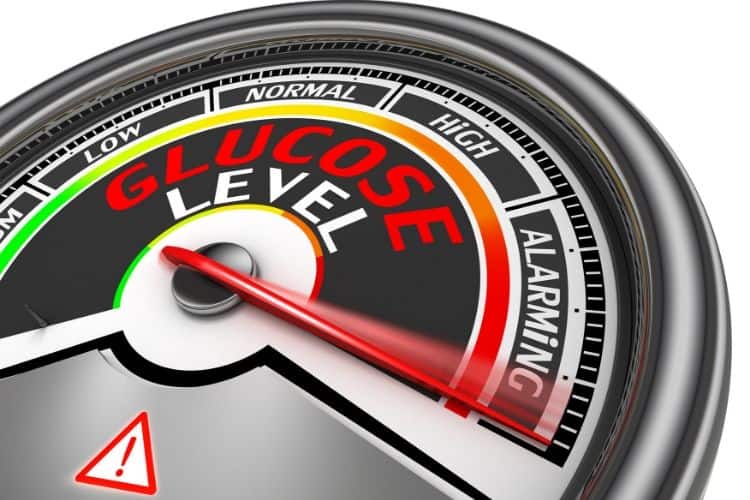
Most people can relate to controlling their blood sugar with diabetes. Yet, keeping tabs on your blood sugar count is the best way to assess how you're going hormonally on the keto diet. It is way more effective than using keto sticks long-term.
You can pick up a blood glucose meter at any pharmacy or order one online here.
If you stick to the keto regimen of low carbs, moderate proteins, and high fats, you will show a fasting blood sugar count of between 70 and 80 grams. As your blood sugar level goes down, your ketone production will increase.
So, what’s the most important thing you need to eliminate to reduce your blood sugar levels?
Ironically, it’s not sugar. Grains are the worst offenders in triggering blood sugar. That is why you MUST eliminate grains from your life. Those low-carb types of bread won’t cut it. You must go cold turkey to bring down your blood sugar levels!
Part 5: 7-Day Keto Diet Kickstart Plan
Ready to start your Keto Diet?
It’s as easy as 1-2-3
- Go Here
- Spend 45 seconds telling them a little bit about yourself and your goals.
- Get your custom plan and review it right away!
It’s really that simple.
But what makes this plan so easy to follow is that literally everything is done for you.
They tell you exactly what to eat and when. They give you the grocery list, the recipes, and even videos showing you how to make all the delicious food!
It doesn’t get easier than this.
So go right now and claim your custom plan while it’s still available!
Finally, we'll provide you with a roadmap for your first week of keto. The meal plan has a wide range of recipes to choose from. It's part of our 19-day meal plan and is a great way to get started on the ketogenic diet, especially if your main goal is losing weight.
We recommend you spend a couple of hours reading over the full meal plan guide and recipes to plan your eating.
Day 1
- Breakfast - Cranberry Pancakes (1 serving)
- Snack - 4-Seed Crispy Crackers (6 servings)
- Lunch - Cauliflower Salad (1 serving)
- Snack - No-Bake Raspberry Cheesecake Bites (4 servings)
- Dinner - Philly Cheesesteak Casserole (1 serving) + Cacao Chia Pudding (1 serving)
- Summary - 1635 calories and 28.2 grams of net carbs
Day 2
- Breakfast - Leek and Bacon Omelette (1 serving)
- Snack - 4-Seed Crispy Crackers (4 servings)
- Lunch - Deviled Egg Salad (1 serving)
- Snack - No-Bake Raspberry Cheesecake Bites (2 servings)
- Dinner - Keto Pad Thai (1 serving)
- Summary - 1760 calories and 13.9 grams of net carbs
Day 3
- Breakfast - Pumpkin Pancakes (2 servings)
- Snack - Peanut Butter Mousse (1 serving)
- Lunch - BLT Salad with Avocado & Cheese (1 serving)
- Snack - Tortilla Chips (2 servings)
- Dinner - Shepherd's Pie (1 serving)
- Summary - 1554 calories and 27.9 grams of net carbs
Day 4
- Breakfast - Keto Chaffles (2 servings) + Crispy Bacon (2 servings)
- Snack - Cheesecake Fat Bombs (3 servings)
- Lunch - Lahmacun (Turkish Pizza) (2 servings)
- Snack - Tortilla Chips (2 servings)
- Dinner - Chicken Meatballs with Zoodles (1 serving)
- Summary - 1760 calories and 27 grams of net carbs
Day 5
- Breakfast - Fathead Bagels (2 servings)
- Snack - Crispy Parmesan Crackers (2 servings)
- Lunch - Easy Salad with Italian Dressing (1 serving)
- Snack - Cheesecake Fat Bombs (3 servings)
- Dinner - Easy Zucchini Alfredo (1 serving)
- Summary - 1819 calories and 21.8 grams of net carbs
Day 6
- Breakfast - Cranberry Pancakes (1 serving)
- Snack - Chocolate Mousse (1 serving)
- Lunch - Iceberg Wedge Salad (1 serving)
- Snack- Crispy Parmesan Crackers (2 servings)
- Dinner - One-Pan Garlic Butter Chicken (1 serving)
- Summary - 1729 calories and 22.5 grams of net carbs
Day 7
- Breakfast - Keto Egg Muffins (2 servings)
- Snack - Coconut Cookies (2 servings)
- Lunch - Cauliflower Pizza (2 servings)
- Dinner - Keto Meatloaf (3 servings) + Homemade Keto Ice Cream (1 serving)
- Summary - 1772 calories and 31.8 grams of net carbs
Take A Quick Quiz
This is a quick quiz put out by the team at Custom Keto Diet.
It takes 45 seconds and then instantly tells you how much weight you can lose.
In fact, it shows you EXACTLY what you could weigh in just 30 days if you simply follow a proven keto diet.
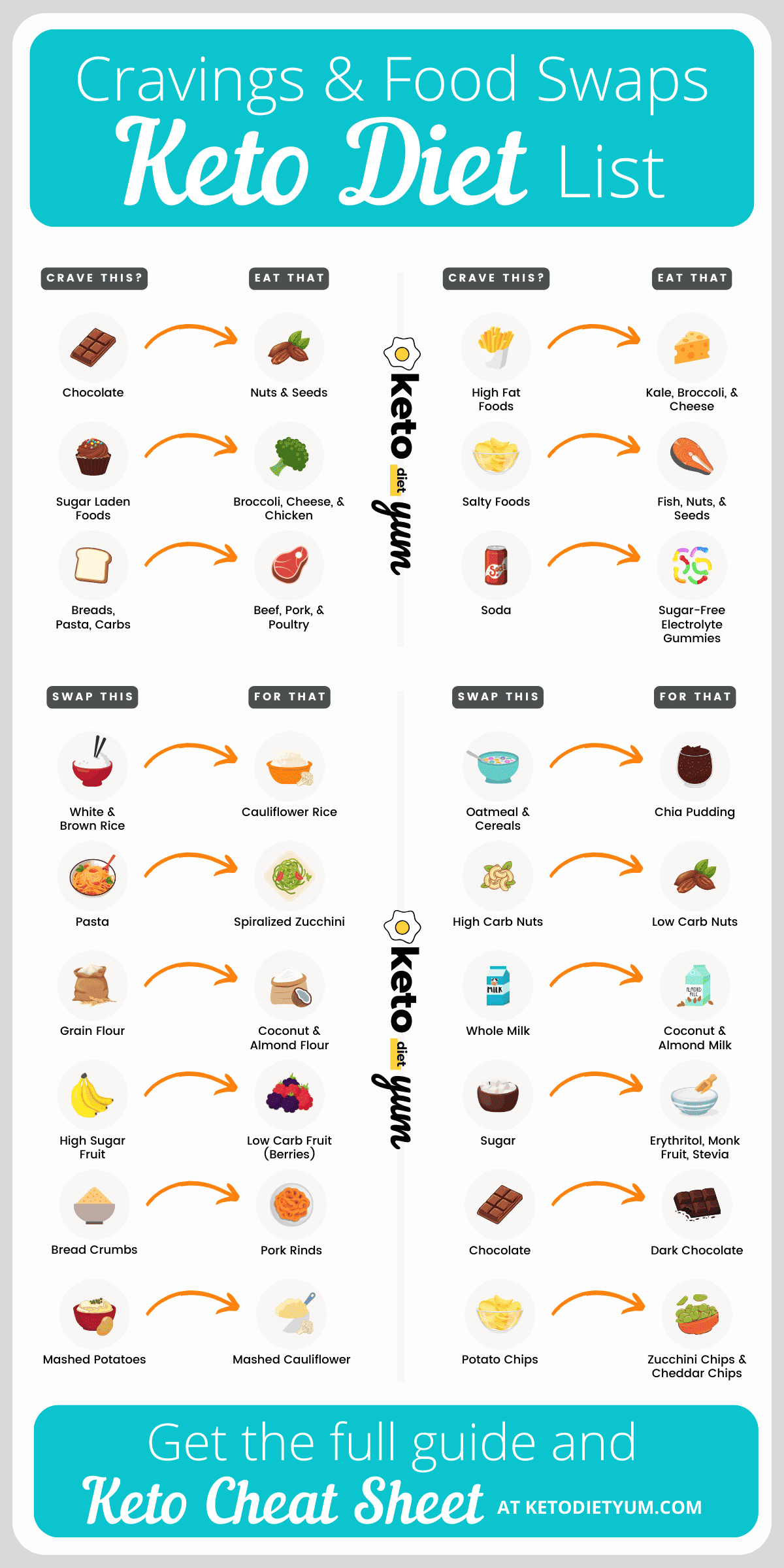

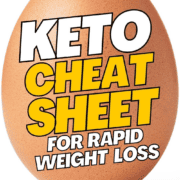
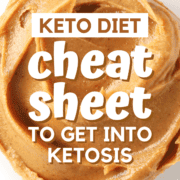
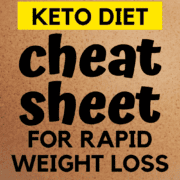
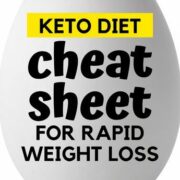
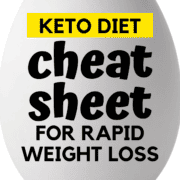
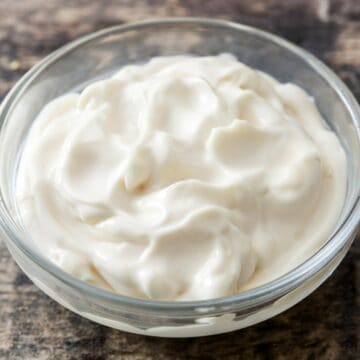
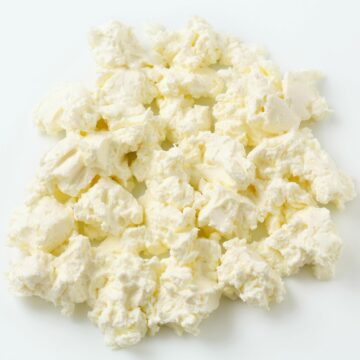
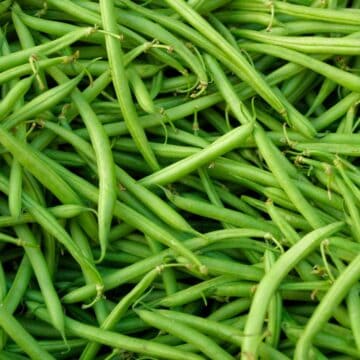
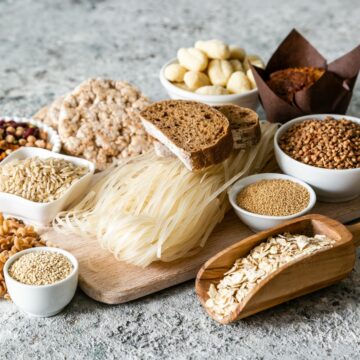
This is the best, most straightforward article on the Keto diet that I’ve read. Thank you!
I love how generous you are in sharing all this information. I have been so frustrated by people that say they want to help women lose weight and they want to share what they have found that worked for them. Then you have a 40 minute video to watch to never get any information but a marketing scheme to sell something. Thanks for giving a beginner a lot of knowledge to understand put falls and a menu plan with easy and delicious recipes
So much great information. And so grateful to you for sharing. I have tried and tried to lose weight with no permanent results….. but I am so motivated right now. Never understood the keto diet as much as I feel like I do right now. Thank you again.
Thank you, thank you. I’m a 70 year old retired cancer nurse, but all I have is the internet. I’ve lost 60 pounds with 100 to go. You fill me with confidence and validate my hopes. You’re making a difference in this old lady’s life. Thank you. I saved this article.
Thank you for all the information you shared about the keto diet. I think I am ready to start the plan after vacation.
Thank you for the info in this article. It answered a lot of my questions about the diet.
Am I allowed to have fresh lemon juice first thing in the mornings when I fast.
Hi Diana!
No, lemon juice contains sugars and calories, so drinking it will end your fast.
You shouldn't be drinking lemon juice on keto anyway unless it's a sugar-free variety.
Jennifer.
I have requested the keto list twice and not received it.
Hi Laurie!
Sorry to hear you haven't received the food list. I've sent you an email with the food list, fruit list, vegetable list, and recipe ebook. Can you please check your email? Also, make sure you check your spam box.
Please let me know if you're still having issues.
Jennifer.
I have been on the Keto diet for years. I go on and off my strictness, but that's OK. I am eating home cooked meals, no sugar, low carbs and plenty of fat.
No processed foods.
Since adopting the diet, I lost weight around my tummy. I also was able to cut down and eliminate some of my prescriptions. My numbers are stellar and I have never felt better in my life, though I am no youngster.
Hi Anne!
I'm so happy to hear you've had so much success!
I hope you've found some of my recipes useful as well.
Wishing you all the best.
Jennifer.
Your recipes are very easy. I appreciate the readily available ingredients so I can whip something up quickly.
Thanks for the great info, I appreciate all you are doing. For longevity, the verdict is in on Keto/low carb no sugar diets.
Gary Taubes has written extensively on this topic.
I am doing intermittent fasting on an 18:6 schedule. The meal plan has 3 meals and 3 snacks which even when not on a diet is just too many meals.
If I am eating 2 meals a day, lunch and dinner, should I just increase portion sizes?
Hi Paula!
Yes, the meal plan is just a guide. You can adjust the meals to fit your schedule and increase the portion sizes to ensure you get enough calories.
I hope that helps! Good luck!
I really enjoyed reading this article. I found it to be honest about the do's and don'ts. The recipes are really helpful for a beginner and they seem doable for someone that doesn't enjoy cooking. Im excited to try some. Thank you.